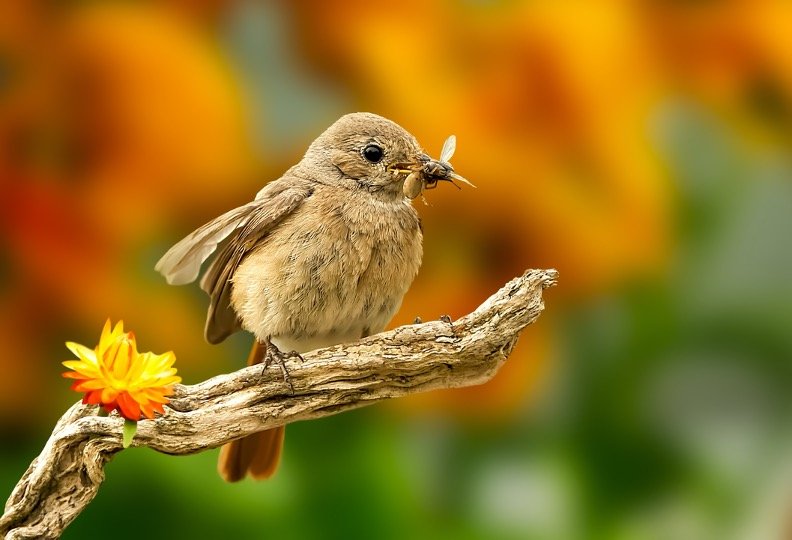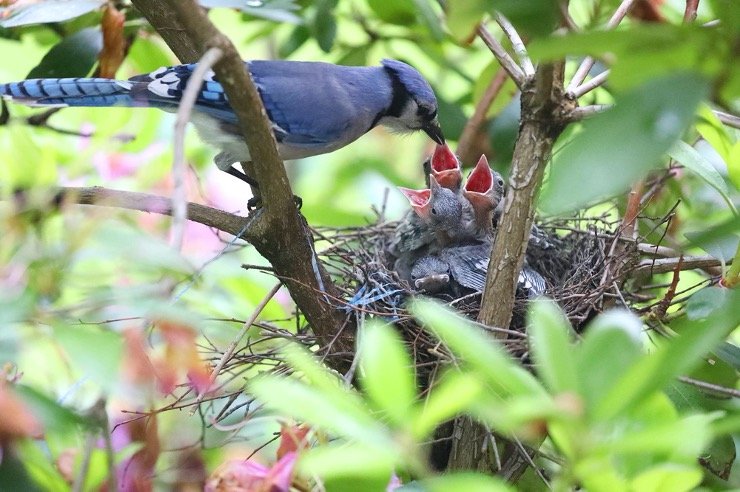
Are Birds Omnivores?
As you would expect, there are over 10,000 kinds of birds on the planet, and their diets and feeds differ greatly. What are omnivorous birds, though? Eagles, ducks, woodpeckers, barn owls, orioles, cranes, pheasants, seagulls, robins, starlings, and chickens are many omnivorous birds. These birds’ diets vary greatly based on their habitat’s food sources available in and around.
While all birds on this list are omnivorous, some are more omnivorous than others. However, they aren’t entirely picky and will consume both plant and animal meals. Animals and birds classified as omnivores consume a wide variety of plant and animal meals in their diets.
The word omnivorous is used to describe these animals and birds. Omnivorous birds’ diets vary greatly based on their range and the availability of certain food sources in their environment.
What is an omnivore, exactly?
Animals and birds classified as omnivores have a diet that regularly comprises plant-based and animal-based foods. The word omnivorous is used to describe these animals and birds.
What foods do omnivorous birds consume?
An omnivorous bird’s diet may be very changeable, depending on the availability of certain food sources within its range and environment. Grains, grass, berries, nuts, grain, nectar, pollen, and buds are some of the plant-based meals consumed by omnivorous birds.
Bugs, reptiles, carrion, mammals, rodent, lizards, fish, eggs, and crustaceans are all eaten by omnivorous birds. Birds do not have to consume various plant or animal food to be labeled omnivorous.
However, the diet must include animal and plant-based items in sufficient proportions. Diet classification is normally done only when birds reach adulthood since both the chick and juvenile phases of their life may have drastically diverse diets. This is because young birds need high-nutrient, high-protein diets to aid their growth and development.

Changes in Omnivorous Diets
Omnivorous bird species often modify their diet seasonally to take advantage of the best food sources. This implies that many birds will consume insects in the spring and summer when bug populations are at their peak.
Fruits may be more easily accessible in late summer when crops mature, while seeds and grains may be more plentiful in the autumn. In the winter, birds will take whatever available food, even nuts and grains that have been stored.
This versatility enables birds to have more options and use additional food sources, which is especially important for resident species that do not move when their favorite foods become scarce.
Birds’ diets may fluctuate as their nutritional demands change throughout their lives. Female birds, for example, require extra calcium during the breeding season to ensure healthy egg development.
When birds are molting and require more protein for healthy feather development, they may consume more animal-based meals. At the same time, higher-calorie, fat-rich foods are frequently favored before and during migration, when the additional energy offers important fuel for migratory species.
Many young birds consume more animal-based diets because they contain more protein, which aids in their growth and development. As the birds get older, they may consume a more diversified food or even transition to a herbivorous diet, but they will no longer be classified as omnivorous.
Are birds omnivorous throughout the year?
Omnivorous birds must adjust their diets based on the time of year and the available food sources. This implies that insects may be the principal food source throughout the spring and summer when insect populations are growing and plentiful.
Insect populations may begin to diminish as summer draws close, and omnivorous birds may feast on fruits that have become more easily accessible as crops develop. Because grains and seeds are more readily accessible in the autumn, they may be ingested more often. Because food is limited during the winter, omnivorous birds become less picky and will eat almost everything.
Also, know How Many Species Of Birds Are There?
Many birds can save grains and seeds for this time of year. Omnivorous birds have a better chance of survival due to their extremely diverse diet and flexibility since they can and will consume a wider variety of foods. This is especially true for resident bird species that do not migrate during the colder winter months.
Not only does the weather influence what omnivorous birds eat, but during the mating season, female birds often ingest calcium-rich foods. This is because it encourages their eggs to grow more healthily.
More animal-based meals may be ingested while birds are molting since the greater amounts of protein and nutrients aid in creating and growing new feathers. Migrating birds need high-calorie, high-fat meals both before and during migration. This increased energy is necessary for the birds to execute long-distance migrations effectively.
Chicks and juvenile birds often consume more animal items in their diets. This is because they need a lot of protein and minerals for growth and development at this stage of their life.
Because they don’t need as much protein and minerals daily, omnivorous birds typically transition to a completely herbivorous diet in their latter years. They wouldn’t officially be labeled omnivorous at this time.
What Vegetarian Birds Eat?
Omnivorous birds consume a wide variety of meals, with plants and animal-based elements making up a major portion of their total diet. Examples of typical foods include:
Seeds, grain, grasses, nectar, fruit, nuts, flowers, leaves, buds, roots, pollen, and sap are all plant materials. Insects, fish, lizards, crabs, mollusks, rodents, snakes, mammals, eggs, and carrion are examples of animal materials.
A bird does not have to eat all potential forms of plant or animal meals, nor do the foods have to be consumed simultaneously to be labeled omnivorous.
However, animal and plant components must be present in large numbers in the total diet. Young chicks may have radically diverse diets to receive the essential proteins, minerals, and nutrients for appropriate development; hence diet type categorization is normally only given to mature, adult birds.
Many adult birds shift their diets seasonally or take advantage of whichever foods are most available or easiest to get. Still, they are termed omnivorous if they consume both plant- and animal-based meals throughout the year.





